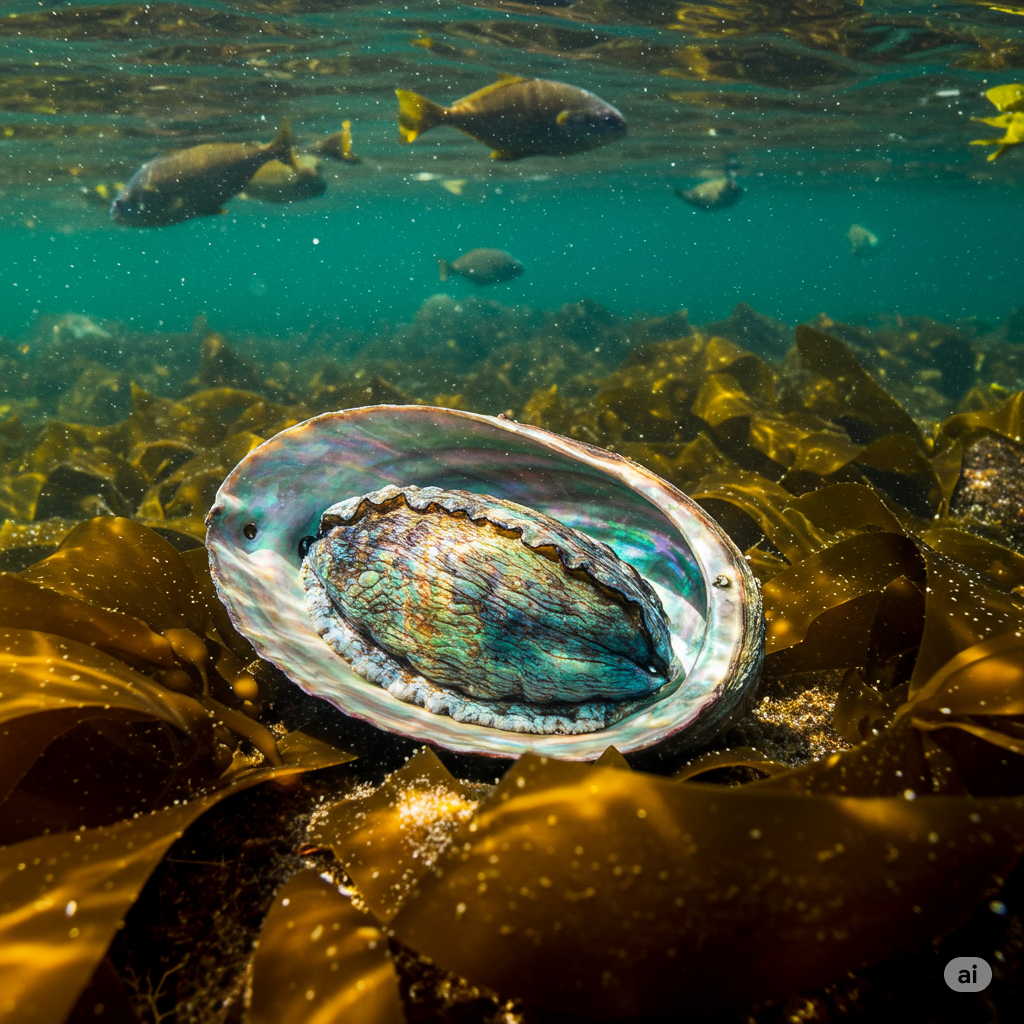What is an Abalone? Exploring the Fascinating Sea Snail
🐚 What is an Abalone? 🌊 Abalone are marine gastropod mollusks belonging to the family Haliotidae. Known for their iridescent shells and prized meat, they inhabit rocky coastal waters worldwide. There are 56 recognized species, including the red abalone (Haliotis rufescens), green abalone (Haliotis fulgens), and New Zealand’s pāua (Haliotis iris).

✨ Physical Characteristics ✨
- Shell: 👂 Ear-shaped, flattened, with a row of respiratory pores. The inner layer (nacre or “mother-of-pearl”) shimmers in blues, greens, and pinks due to light diffraction.
- Size: 📏 5–30 cm (2–12 inches), depending on species.
- Body: 💪 A muscular “foot” grips rocks and allows slow movement. 📡 Sensory tentacles and 👀 eyespots detect light and movement.
- Lifespan: ⏳ 10–40 years (varies by species and environment).
🏞️ Habitat & Behavior 🐌
- Where They Live: ⛰️ Rocky subtidal zones (5–30 meters deep). Found in cold (e.g., California, Japan) and warm waters (e.g., Australia, South Africa).
- Diet: 🌱 Herbivores; graze on algae using a rasping tongue (radula). Juveniles eat drift algae; adults target kelp and macroalgae.
- Movement: 🌙 Nocturnal; crawl slowly using their muscular foot. Can clamp tightly to rocks to avoid predators.
🥚 Reproduction & Lifecycle 🌊
- Spawning: 🌬️ Males and females release sperm/eggs into the water during synchronized events (often triggered by temperature changes). A single female can release millions of eggs.
- Larvae: 🏊 Free-swimming for 1–2 weeks before settling on rocks.
- Growth: rings Shells develop ridges (“growth rings”) as they age. Reach maturity in 3–7 years.
🌿 Ecological Role 🐠
- Ecosystem Engineers: 🧹 Grazing controls algal growth, preventing overgrowth that smothers coral and other marine life. 🏠 Shells provide microhabitats for crabs, shrimp, and small fish.
- Key Species in Food Webs: 🦦 Preyed on by sea otters, 🐙 octopuses, ⭐ starfish, and 👤 humans.
🍽️ Cultural & Economic Importance 💎
- Culinary Delicacy: 🍣 Prized in Asian cuisines (e.g., sushi, stir-fries). 🧑🌾 Wild populations overharvested; farmed abalone now supplies 95% of global demand.
- Mother-of-Pearl: ✨ Used in jewelry, 🛋️ furniture inlay, and traditional art (e.g., Māori pāua carvings).
- Symbolism: 🇨🇳 Represents longevity and good fortune in Chinese culture. 🏹 Sacred to Indigenous coastal tribes (e.g., Chumash of California).
⚠️ Conservation Challenges 🌡️
- Threats: 🎣 Overfishing (illegal poaching remains rampant). 🌡️ Climate change (ocean acidification weakens shells). 🚧 Habitat loss from pollution and coastal development.
- Protection Efforts: 📜 CITES-listed: Commercial trade restricted for endangered species. 🏞️ Marine protected areas (e.g., California’s abalone recovery zones). 🌊 Aquaculture advancements (e.g., land-based farms in China, South Africa).
🎉 Fun Facts 🧪
- Abalone blood is 💙💚 blue-green (contains hemocyanin, a copper-based oxygen carrier).
- Their shells can withstand pressures of 💪 5,000 psi (stronger than concrete).
- The world’s largest abalone species is the ❤️ red abalone, reaching up to 📏 30 cm.
- Abalone have 🤔 no brain but a decentralized nervous system.
🙏 How to Help 🚫
- Avoid purchasing wild-caught abalone products.
- Support sustainable aquaculture and marine conservation NGOs.
- Report poaching to local authorities.